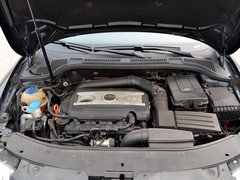新旧高端科技用于石油泄漏
Both Old and New Cutting-Edge Technology Used in Oil Spill
Since the April 20 explosion and fire that sank the BP Deepwater Horizon off-shore oil rig, about 800,000 liters of crude oil a day have been spewing from the broken well into the Gulf of Mexico.
The massive spill is threatening marine life, commercial fishing and hundreds of kilometers of coastal wetlands. Unlike a tanker spill or a broken pipeline, this is an ongoing crisis.
When President Barack Obama visited the Gulf region Sunday to assess the scope of the disaster and the steps being taken to end it, he made it clear to reporters what he sees as the top priority.

"We've got a bunch of different tasks. The first one is how do we plug this hole."
'The hole'
That hole - actually three gushing vents of crude oil at the damaged ocean-floor well-head nearly 2 kilometers below the surface - was caused by the failure of a blow-out preventer. That's a pressure-sensitive safety device designed to shut off the flow of oil in case of a sudden break in the pipe leading up to the floating oil platform.
Lamar McKay, head of BP America told ABC News that attempts to use underwater robotic equipment to fix the shut-off valve are complex. "This is like doing open-heart surgery at 5,000 feet [1,524 meters], in the dark with robot-controlled submarines."
British Petroleum is responsible for the repair and cleanup effort. Chief Executive Officer Tony Hayward says BP has also begun drilling a relief well to intersect the existing well, bore a hole in it, and then pump in cement to plug the leak. But that job could take as long as three months to complete.

Dome solution
Right now, the best hope for a quick fix appears to be the 12-meter tall concrete-and-steel domed tower that BP engineers are preparing to lower into the Gulf and place directly over the main leak by week's end. The 80-ton box would capture and siphon the escaping oil to tankers on the surface.
Richard Charter is an oil industry expert and senior policy advisor for Defenders of Wildlife. He says the dome technique has never been used at such depths and is risky.
"I would hope that they would be very careful in deploying those with cables and remote operating vehicles, not to pump and break off the riser pipe." If that happens, he says, "You would have a wide open well on the sea floor and the flow rate could increase exponentially."
BP announced Wednesday that their robotic submersible had managed to stop one of the three leaks. However, until the other two are capped, oil continues to flow unabated into the Gulf of Mexico.
New approaches
The disaster response team includes U.S. government agencies and British Petroleum.
BP's Chief Executive Officer Tony Hayward says a massive operation is underway to contain the spreading oil slick down before it reaches shore.











